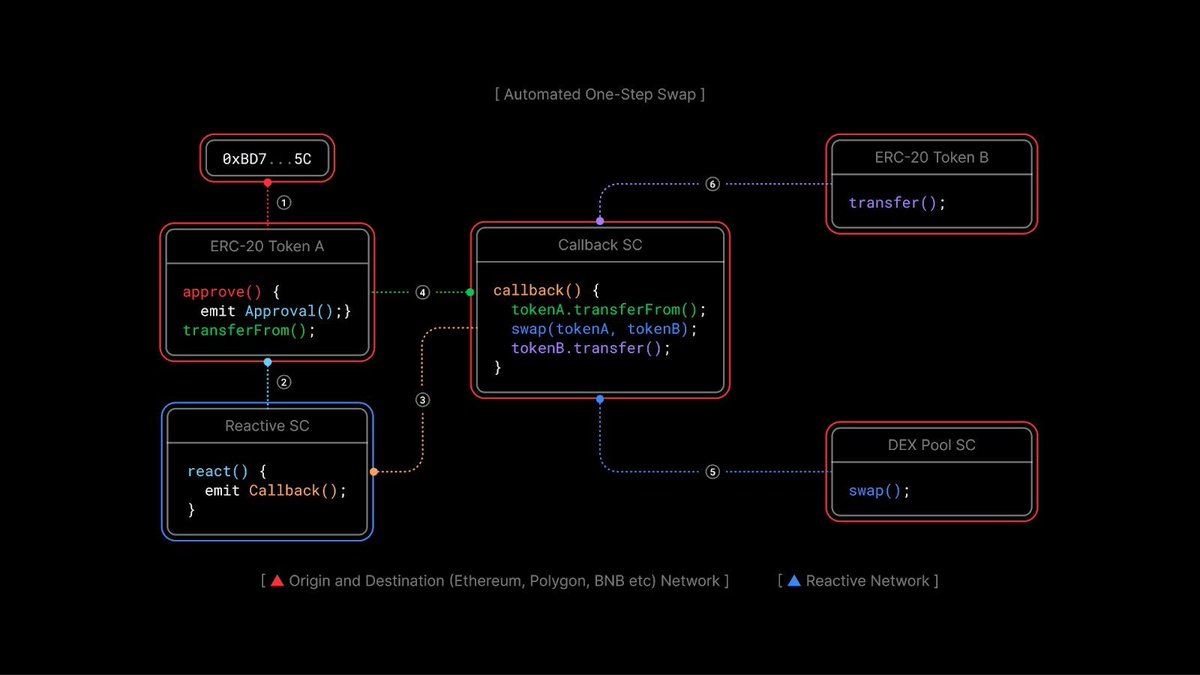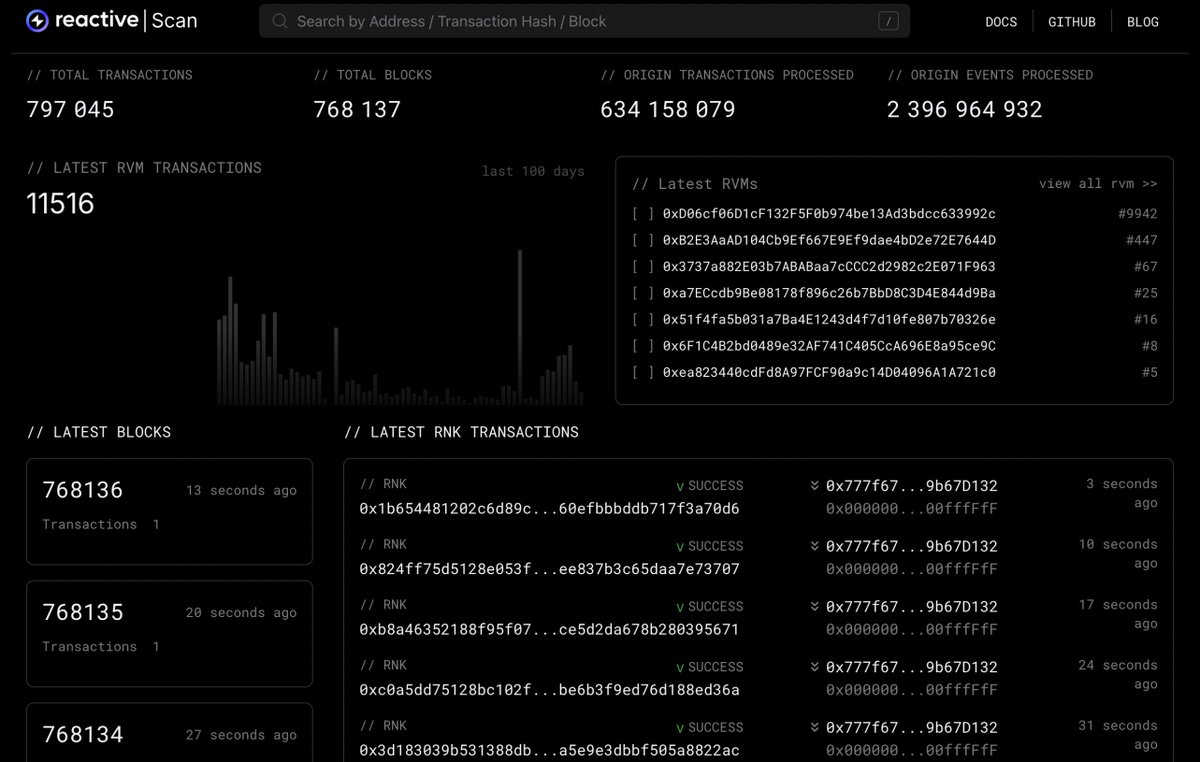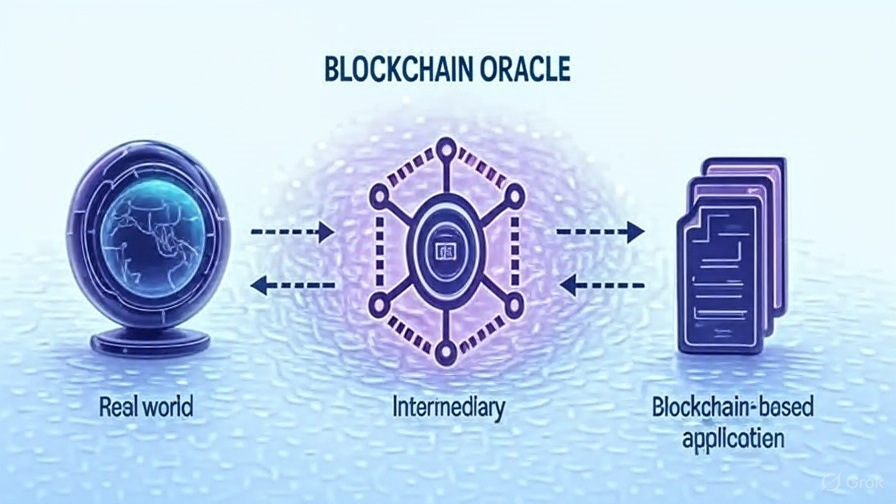
PRQ
PARSIQ 价格
$0.049900
-$0.00123
(-2.41%)
过去 24 小时的价格变化

您感觉 PRQ 今天会涨还是会跌?
您可以通过点赞或点踩来分享对该币种今天的涨跌预测
投票并查看结果
免责声明
本页面的社交内容 (包括由 LunarCrush 提供支持的推文和社交统计数据) 均来自第三方,并按“原样”提供,仅供参考。本文内容不代表对任何数字货币或投资的认可或推荐,也未获得欧易授权或撰写,也不代表我们的观点。我们不保证所显示的用户生成内容的准确性或可靠性。本文不应被解释为财务或投资建议。在做出投资决策之前,评估您的投资经验、财务状况、投资目标和风险承受能力并咨询独立财务顾问至关重要。过去的表现并不代表未来的结果。您的投资价值可能会波动,您可能无法收回您投资的金额。您对自己的投资选择自行承担全部责任,我们对因使用本信息而造成的任何损失或损害不承担任何责任。提供外部网站链接是为了用户方便,并不意味着对其内容的认可或控制。
请参阅我们的 使用条款 和 风险警告,了解更多详情。通过使用第三方网站(“第三方网站”),您同意对第三方网站的任何使用均受第三方网站条款的约束和管辖。除非书面明确说明,否则欧易及其关联方(“OKX”)与第三方网站的所有者或运营商没有任何关联。您同意欧易对您使用第三方网站而产生的任何损失、损害和任何其他后果不承担任何责任。请注意,使用第三方网站可能会导致您的资产损失或贬值。本产品可能无法在所有司法管辖区提供或适用。
请参阅我们的 使用条款 和 风险警告,了解更多详情。通过使用第三方网站(“第三方网站”),您同意对第三方网站的任何使用均受第三方网站条款的约束和管辖。除非书面明确说明,否则欧易及其关联方(“OKX”)与第三方网站的所有者或运营商没有任何关联。您同意欧易对您使用第三方网站而产生的任何损失、损害和任何其他后果不承担任何责任。请注意,使用第三方网站可能会导致您的资产损失或贬值。本产品可能无法在所有司法管辖区提供或适用。
PARSIQ 市场信息
市值
市值是通过流通总应量与最新价格相乘进行计算。市值 = 当前流通量 × 最新价
流通总量
目前该代币在市场流通的数量
市值排行
该资产的市值排名
历史最高价
该代币在交易历史中的最高价格
历史最低价
该代币在交易历史中的最低价格
24 小时最高
$0.052200
24 小时最低
$0.049020
历史最高价
$2.6320
-98.11% (-$2.5821)
最后更新日期:2021年4月12日
历史最低价
$0.039120
+27.55% (+$0.010780)
最后更新日期:2025年5月8日
PARSIQ 动态资讯
以下内容源自 。

CoinDesk
作者:Omkar Godbole(除非另有说明,否则所有时间均为美国东部时间)
加密货币市场是一片绿色的海洋,因为交易员忽略了美联储周三提出的滞胀幽灵,并为唐纳德·特朗普总统暗示与主要贸易伙伴达成一项重大贸易协议而欢呼。
比特币上涨 2.6%,接近 100,000 美元,尽管《华尔街日报》报道称,该公告可能更像是一个谈判框架,而不是实际确认协议。更广泛的市场带来了更大的收益,XRP、ETH、ADA、DOGE 和其他几种代币上涨了 4% 至 6%。与 memecoin 项目、Layer 1 和 DeFi 相关的代币正在引领市场走高。
关键新闻方面,在美国上市的现货比特币交易所交易基金 (ETF) 的累计流入量已创下 406.2 亿美元的历史新高,表明机构采用率持续上升。(查看今日图表。
周四,亚利桑那州成为美国第二个通过比特币储备法案的州。该法规允许国家在所有者无视三年内发送的消息的情况下获得废弃硬币的所有权。它还允许该州进行 BTC 投资。
一名以太鲸 ICO 参与者以 954 万美元的价格出售了 5,200 枚 ETH,延续了最近的一系列清算。鲸鱼仍然持有 8,300 ETH(1528 万美元)。
去中心化的第 1 层区块链 Avalanche 的 C-Chain 注册了两年来的最高交易量,gas 成本中位数仅为 0.00078 美元。截至发稿时,AVAX 代币上涨 7% 至 21 美元。
Stripe 推出了一项名为 Stablecoin Financial Accounts 的新功能,由 Bridge 提供支持,可在 100 多个国家/地区解锁对美元计价服务的访问。
在宏观方面,交易员将关注美国第一季度的单位劳动力成本数据,以寻找可能推迟美联储降息的粘性工资价格通胀迹象。保持警惕!
看点
加密:
5 月 8 日:法官 John G. Koeltl 将在美国纽约南区地方法院对现已解散的加密借贷公司 Celsius Network 的创始人兼前首席执行官 Alex Mashinsky 进行宣判。
5 月 12 日下午 1 点至下午 5:30:美国证券交易委员会加密工作组圆桌会议,主题为“代币化:将资产上链:传统金融和 DeFi 相遇的地方”,将在华盛顿的美国证券交易委员会总部举行。
宏
5 月 8 日上午 7 点:英格兰银行宣布其利率决定。货币政策报告新闻发布会在 30 分钟后进行直播。
银行利率估计 4.25% 对比前值 4.5%
5 月 8 日上午 8:30:美国劳工部发布截至 5 月 3 日当周的失业保险数据。
初请失业金人数 估计 230K vs. 前值 241K
5月8日上午10点:据报道,唐纳德·特朗普总统将在白宫新闻发布会上公布与英国的贸易协议框架。
5 月 9 日至 12 日:中国国务院副总理何立峰在访问瑞士期间将与美国财政部长斯科特·贝森特举行贸易会谈。
收益(基于 FactSet 数据的估计值)
5 月 8 日:CleanSpark (CLSK),盘后,-0.11 美元
5 月 8 日:Coinbase Global (COIN),盘后,1.88 美元
5 月 8 日:Hut 8 (HUT),盘前,-0.10 美元
5 月 8 日:MARA Holdings (MARA),盘后,-0.52 美元
5 月 13 日:Semler Scientific (SMLR),盘后交易
Token 事件
治理投票和调用
Arbitrum DAO 正在投票决定是否将其 3500 万枚 ARB 多元化计划中的最后一笔 1070 万美元投入 WisdomTree、Spiko 和 Franklin Templeton 的三只低风险、基于美元的基金中。投票将于 5 月 8 日结束。
Compound DAO 正在投票决定在 Compound V3 上优先考虑哪种新的抵押品类型。投票将于 5 月 8 日结束。
5 月 8 日上午 10 点:Balancer 和 Euler 将举办“有问必答”(AMA) 会议。
5 月 15 日上午 10 点:Moca Network 将举办一场讨论网络更新的 Discord 市政厅会议。
解开
5 月 9 日:Movement (MOVE) 解锁其 2.04% 的流通供应量,价值 808 万美元。
5 月 11 日:Solayer (LAYER) 解锁其 12.87% 的流通供应量,价值 3566 万美元。
5 月 12 日:Aptos (APT) 解锁其 1.82% 的流通供应量,价值 5745 万美元。
5 月 13 日:WhiteBIT Coin (WBT) 解锁其 27.41% 的流通供应量,价值 11.4 亿美元。
5 月 15 日:Starknet (STRK) 解锁其价值 1770 万美元的 4.09% 的流通供应量。
代币发布
5 月 8 日:AIXBT 将在 Binance.US 上市。
5 月 8 日:Space and Time (SXT) 将在 Binance、MEXC、BingX、KuCoin、Bitget 等平台上线。
5 月 16 日:Galxe (GAL)、Litentry (LIT)、Mines of Dalarnia (DAR)、Orion Protocol (ORN) 和 PARSIQ (PRQ) 将从 Coinbase 中除名。
会议
CoinDesk 的共识将于 5 月 14 日至 16 日在多伦多举行。使用代码 DAYBOOK 并节省 15% 的通行证费用。
第 3 天(共 3 天):Stripe 会议(旧金山)
第 2 天(共 3 天):SALT 2025 年百慕大数字金融论坛(百慕大汉密尔顿)
5 月 9 日至 10 日:斯坦福区块链治理峰会(旧金山)
5 月 11 日至 17 日:加拿大加密周(多伦多)
5 月 12 日至 13 日:迪拜金融科技峰会
5月12-13日:Filecoin (FIL) 开发者峰会(多伦多)
5 月 12 日至 13 日:DeFi 研究 (TLDR) 最新会议(纽约)
5月12-14日:ACI第九届金融科技和新兴支付系统年度法律、监管和合规论坛(纽约)
5 月 13 日:区块链未来主义者会议(多伦多)
5 月 13 日:ETHWomen(多伦多)
5 月 14 日至 16 日:CoinDesk 的 2025 年共识(多伦多)
Token Talk
作者:Shaurya Malwa
3 美元,只需 3 美元。
DeFiLlama 数据显示,这就是 Movement 网络在过去 24 小时内赚取的全部费用,这是这家曾经价值 10 亿美元的四面楚歌的链条一周内的最低水平。
每日 DEX 交易量已跌破 500 美元,与早些时候的繁荣相比大幅下降,当时网络每天处理超过 200 万美元。
在 CoinDesk 报告称 MOVE 代币的分发和供应方式存在违规行为几天后,出现了这一下滑。
具有讽刺意味的是,MOVE 代币在链存在之前推出,通过私人销售筹集了数百万美元,而实际的区块链基础设施却远远落后。
该项目向一家名为 Rentech 的做市商公司发放了 6600 万枚 MOVE 代币(占供应量的 5%),该公司以 3800 万美元的价格抛售了几乎所有代币。
创始人 Rushi Manche 于 5 月 7 日被解雇,就在被停职几天后。他承认“零监督”,并将该项目在 CoinDesk 报告后在 X 个帖子中崩溃归咎于恶意顾问。
MOVE 从 2024 年 12 月的峰值 1.45 美元跌至仅 15 美分,跌幅超过 85%。
没有信任,没有牵引力,现在几乎没有任何费用,Movement 已经变成了 2025 年的警示故事——一个价值 10 亿美元的纸面承诺,但现实却是 3 美元。
衍生品定位
BTC 和 ETH 永续资金利率年化上涨近 10%,表明市场看涨情绪增强。
CME 的 BTC、ETH 期货溢价仍低于 10%。
在 Deribit 上,比特币和以太币期权风险逆转显示多个时间框架的看涨偏向。
值得注意的大宗交易包括 6 月到期的 $85K BTC 看跌期权的空头头寸,以及涉及行使价 $140K 和 $170K 的看涨期权的日历价差,分别于 9 月 26 日和 12 月 26 日到期。
市场动向:
BTC 从美国东部时间周三下午 4 点上涨 3.49% 至 99,620.26 美元(24 小时:+2.77%)
ETH 上涨 7.76% 至 1,939.15 美元(24 小时:+5.11%)
CoinDesk 20 上涨 5.75% 至 2,854.54(24 小时:+3.81%)
以太币 CESR 综合质押率下降 6 个基点至 2.894%
Binance 的 BTC 资金费率为 0.0048%(年化 5.2242%)
美元指数上涨 0.48% 至 100.09
黄金下跌 1.25% 至 3,343.61 美元/盎司
白银下跌 0.25% 至 32.40 美元/盎司
日经 225 指数收盘 +0.41% 至 36,928.63
恒生指数收盘 +0.37%,报 22,775.92 点
富时指数上涨 0.39% 至 8,592.98
Euro Stoxx 50 上涨 1.21% 至 5,293.07
道琼斯工业平均指数周三收盘 +0.7% 至 41,113.97
标准普尔 500 指数收盘 +0.43% 至 5,631.28
纳斯达克收盘 +0.27% 至 17,738.16 点
S&P/TSX 综合指数收盘 +0.75% 至 25,161.18
标准普尔 40 拉丁美洲指数收盘下跌 0.2%,至 2,512.07 点
美国 10 年期国债利率上涨 5 个基点至 4.315%
E-迷你标准普尔 500 指数期货上涨 1.03% 至 5,170.00
E-迷你纳斯达克100指数期货上涨1.4%,至20,240.00点
E-迷你道琼斯工业平均指数期货上涨 0.82% 至 41,552.00
比特币统计:
BTC 优势:65.08 (-0.44%)
以太坊与比特币的比率:0.01942 (4.02%)
哈希率(7 天移动平均):909 EH/s
哈希价(现货):53.34 美元
总费用:6.64 BTC / 661,908.40 美元
CME 期货持仓量:142,255 BTC
以黄金计价的 BTC:29.5 盎司
BTC vs Gold 市值:8.37%
技术分析
XRP-ETH 比率已从年初至今的上升趋势线中跳出。
细分表明,在未来几天,以太币相对于 XRP 的表现优于 XRP。
加密股票
策略 (MSTR):周一收于 392.48 美元(+1.78%),盘前上涨 5.35% 至 413.49 美元
Coinbase Global (COIN):收于 196.56 美元(-0.17%),上涨 4.77% 至 205.94 美元
Galaxy Digital Holdings (GLXY):收于 26.49 加元 (+2.28%)
MARA Holdings (MARA):收于 13.33 美元(+1.37%),上涨 5.55% 至 14.07 美元
Riot Platforms (RIOT):收于 7.84 美元(-0.25%),上涨 5.1% 至 8.24 美元
Core Scientific (CORZ):收于 8.90 美元(-1%),上涨 5.28% 至 9.37 美元
CleanSpark (CLSK):收于 8.03 美元(-0.74%),上涨 5.23% 至 8.45 美元
CoinShares Valkyrie 比特币矿工 ETF (WGMI):收于 14.59 美元(+0.34%),上涨 5.89% 至 15.45 美元
Semler Scientific (SMLR):收于 33.05 美元(-0.12%),上涨 4.99% 至 34.70 美元
Exodus Movement (EXOD):收于 40.01 美元 (+1.34%),上涨 0.25% 至 40.11 美元
ETF 流向
现货 BTC ETF:
每日净流量:1.423 亿美元
累计净流入:406.8 亿美元
BTC 总持有量 ~ 117 万
现货 ETH ETF
每日净流入:-2180 万美元
累计净流入:24.8 亿美元
ETH 总持有量 ~ 345 万
资料来源:Farside Investors
隔夜流量
每日图表
匿名分析师 Checkmate 分享的图表显示,流入美国上市的现货比特币 ETF 的累计流入量已创下 400 亿美元以上的历史新高。
本周早些时候,贝莱德的 IBIT 年初至今的流入量超过了 SPDR 黄金 ETF。
当你在睡觉时
特朗普将宣布与英国的贸易协议框架(华尔街日报):据知情人士透露,英国正在寻求解除美国对钢铁和汽车征收的高额关税,以换取对数字服务征税。
印度和巴基斯坦在冲突后可能会有一个出口。他们会接受吗?(纽约时报):在印度袭击造成巴基斯坦 20 多人死亡后,印度和巴基斯坦表示有缓和局势的余地,据报道,双方都将他们的反应描述为有限的和秘密渠道的谈判。
币安创始人 CZ 确认他已申请特朗普入狱后赦免 (CoinDesk):CZ 表示,在 3 月份的媒体报道错误地声称他已经申请了总统赦免后,他的律师已经申请了总统赦免。
Arthur Hayes 表示,随着美中达成空心贸易协议,比特币到 2028 年将达到 1M 美元 (CoinDesk):这位前 BitMEX 首席执行官预测,到 2028 年,比特币将达到 100 万美元,他引用了财政部驱动的流动性和地缘政治变化,同时认为美中贸易协议在很大程度上是象征性的。
欧盟希望停止所有俄罗斯天然气进口。莫斯科的集团朋友说这是一个“严重错误”(CNBC):欧盟委员会到 2027 年停止从俄罗斯进口所有能源的计划遭到匈牙利和斯洛伐克的谴责。
随着对垃圾债务的渴望飙升,银行家们正在恢复生机(彭博社):一些美国投资者正在转向欧洲垃圾债券,以便在与关税相关的不确定性中分散投资,这是由于对更快降息的预期和对不受贸易风险影响的公司的需求所吸引的。
在以太中
查看原文


22.08万
3
PRQ 计算器


PARSIQ 价格表现 (美元)
PARSIQ 当前价格为 $0.049900。PARSIQ 的价格在过去 24 小时内下跌了 -2.41%。目前,PARSIQ 市值排名为第 0 名,实时市值为 $1,463.49万,流通供应量为 292,756,872 PRQ,最大供应量为 310,256,872 PRQ。我们会实时更新 PARSIQ/USD 的价格。
今日
-$0.00123
-2.41%
7 天
-$0.00507
-9.23%
30 天
-$0.02513
-33.50%
3 个月
-$0.16028
-76.26%
关于 PARSIQ (PRQ)
此评级是欧易从不同来源收集的汇总评级,仅供一般参考。欧易不保证评级的质量或准确性。欧易无意提供 (i) 投资建议或推荐;(ii) 购买、出售或持有数字资产的要约或招揽;(iii) 财务、会计、法律或税务建议。包括稳定币和 NFT 的数字资产容易受到市场波动的影响,风险较高,波动较大,可能会贬值甚至变得一文不值。数字资产的价格和性能不受保证,且可能会发生变化,恕不另行通知。您的数字资产不受潜在损失保险的保障。 历史回报并不代表未来回报。欧易不保证任何回报、本金或利息的偿还。欧易不提供投资或资产建议。您应该根据自身的财务状况仔细考虑交易或持有数字资产是否适合您。具体情况请咨询您的专业法务、税务或投资人士。
展开更多
- 官网
- 白皮书
- 区块浏览器
关于第三方网站
关于第三方网站
通过使用第三方网站(“第三方网站”),您同意对第三方网站的任何使用均受第三方网站条款的约束和管辖。除非书面明确说明,否则 OKX 及其关联方(“OKX”)与第三方网站的所有者或运营商没有任何关联。您同意 OKX 对您使用第三方网站而产生的任何损失、损害和任何其他后果不承担任何责任。请注意,使用第三方网站可能会导致您的资产损失或贬值。
PARSIQ 常见问题
PARSIQ 今天值多少钱?
目前,一个 PARSIQ 价值是 $0.049900。如果您想要了解 PARSIQ 价格走势与行情洞察,那么这里就是您的最佳选择。在欧易探索最新的 PARSIQ 图表,进行专业交易。
数字货币是什么?
数字货币,例如 PARSIQ 是在称为区块链的公共分类账上运行的数字资产。了解有关欧易上提供的数字货币和代币及其不同属性的更多信息,其中包括实时价格和实时图表。
数字货币是什么时候开始的?
由于 2008 年金融危机,人们对去中心化金融的兴趣激增。比特币作为去中心化网络上的安全数字资产提供了一种新颖的解决方案。从那时起,许多其他代币 (例如 PARSIQ) 也诞生了。
PARSIQ 的价格今天会涨吗?
查看 PARSIQ 价格预测页面,预测未来价格,帮助您设定价格目标。
ESG 披露
ESG (环境、社会和治理) 法规针对数字资产,旨在应对其环境影响 (如高能耗挖矿)、提升透明度,并确保合规的治理实践。使数字代币行业与更广泛的可持续发展和社会目标保持一致。这些法规鼓励遵循相关标准,以降低风险并提高数字资产的可信度。
资产详情
名称
OKcoin Europe LTD
相关法人机构识别编码
54930069NLWEIGLHXU42
代币名称
parsiq
共识机制
parsiq is present on the following networks: binance_smart_chain, ethereum.
Binance Smart Chain (BSC) uses a hybrid consensus mechanism called Proof of Staked Authority (PoSA), which combines elements of Delegated Proof of Stake (DPoS) and Proof of Authority (PoA). This method ensures fast block times and low fees while maintaining a level of decentralization and security. Core Components 1. Validators (so-called “Cabinet Members”): Validators on BSC are responsible for producing new blocks, validating transactions, and maintaining the network’s security. To become a validator, an entity must stake a significant amount of BNB (Binance Coin). Validators are selected through staking and voting by token holders. There are 21 active validators at any given time, rotating to ensure decentralization and security. 2. Delegators: Token holders who do not wish to run validator nodes can delegate their BNB tokens to validators. This delegation helps validators increase their stake and improves their chances of being selected to produce blocks. Delegators earn a share of the rewards that validators receive, incentivizing broad participation in network security. 3. Candidates: Candidates are nodes that have staked the required amount of BNB and are in the pool waiting to become validators. They are essentially potential validators who are not currently active but can be elected to the validator set through community voting. Candidates play a crucial role in ensuring there is always a sufficient pool of nodes ready to take on validation tasks, thus maintaining network resilience and decentralization. Consensus Process 4. Validator Selection: Validators are chosen based on the amount of BNB staked and votes received from delegators. The more BNB staked and votes received, the higher the chance of being selected to validate transactions and produce new blocks. The selection process involves both the current validators and the pool of candidates, ensuring a dynamic and secure rotation of nodes. 5. Block Production: The selected validators take turns producing blocks in a PoA-like manner, ensuring that blocks are generated quickly and efficiently. Validators validate transactions, add them to new blocks, and broadcast these blocks to the network. 6. Transaction Finality: BSC achieves fast block times of around 3 seconds and quick transaction finality. This is achieved through the efficient PoSA mechanism that allows validators to rapidly reach consensus. Security and Economic Incentives 7. Staking: Validators are required to stake a substantial amount of BNB, which acts as collateral to ensure their honest behavior. This staked amount can be slashed if validators act maliciously. Staking incentivizes validators to act in the network's best interest to avoid losing their staked BNB. 8. Delegation and Rewards: Delegators earn rewards proportional to their stake in validators. This incentivizes them to choose reliable validators and participate in the network’s security. Validators and delegators share transaction fees as rewards, which provides continuous economic incentives to maintain network security and performance. 9. Transaction Fees: BSC employs low transaction fees, paid in BNB, making it cost-effective for users. These fees are collected by validators as part of their rewards, further incentivizing them to validate transactions accurately and efficiently.
The Ethereum network uses a Proof-of-Stake Consensus Mechanism to validate new transactions on the blockchain. Core Components 1. Validators: Validators are responsible for proposing and validating new blocks. To become a validator, a user must deposit (stake) 32 ETH into a smart contract. This stake acts as collateral and can be slashed if the validator behaves dishonestly. 2. Beacon Chain: The Beacon Chain is the backbone of Ethereum 2.0. It coordinates the network of validators and manages the consensus protocol. It is responsible for creating new blocks, organizing validators into committees, and implementing the finality of blocks. Consensus Process 1. Block Proposal: Validators are chosen randomly to propose new blocks. This selection is based on a weighted random function (WRF), where the weight is determined by the amount of ETH staked. 2. Attestation: Validators not proposing a block participate in attestation. They attest to the validity of the proposed block by voting for it. Attestations are then aggregated to form a single proof of the block’s validity. 3. Committees: Validators are organized into committees to streamline the validation process. Each committee is responsible for validating blocks within a specific shard or the Beacon Chain itself. This ensures decentralization and security, as a smaller group of validators can quickly reach consensus. 4. Finality: Ethereum 2.0 uses a mechanism called Casper FFG (Friendly Finality Gadget) to achieve finality. Finality means that a block and its transactions are considered irreversible and confirmed. Validators vote on the finality of blocks, and once a supermajority is reached, the block is finalized. 5. Incentives and Penalties: Validators earn rewards for participating in the network, including proposing blocks and attesting to their validity. Conversely, validators can be penalized (slashed) for malicious behavior, such as double-signing or being offline for extended periods. This ensures honest participation and network security.
奖励机制与相应费用
parsiq is present on the following networks: binance_smart_chain, ethereum.
Binance Smart Chain (BSC) uses the Proof of Staked Authority (PoSA) consensus mechanism to ensure network security and incentivize participation from validators and delegators. Incentive Mechanisms 1. Validators: Staking Rewards: Validators must stake a significant amount of BNB to participate in the consensus process. They earn rewards in the form of transaction fees and block rewards. Selection Process: Validators are selected based on the amount of BNB staked and the votes received from delegators. The more BNB staked and votes received, the higher the chances of being selected to validate transactions and produce new blocks. 2. Delegators: Delegated Staking: Token holders can delegate their BNB to validators. This delegation increases the validator's total stake and improves their chances of being selected to produce blocks. Shared Rewards: Delegators earn a portion of the rewards that validators receive. This incentivizes token holders to participate in the network’s security and decentralization by choosing reliable validators. 3. Candidates: Pool of Potential Validators: Candidates are nodes that have staked the required amount of BNB and are waiting to become active validators. They ensure that there is always a sufficient pool of nodes ready to take on validation tasks, maintaining network resilience. 4. Economic Security: Slashing: Validators can be penalized for malicious behavior or failure to perform their duties. Penalties include slashing a portion of their staked tokens, ensuring that validators act in the best interest of the network. Opportunity Cost: Staking requires validators and delegators to lock up their BNB tokens, providing an economic incentive to act honestly to avoid losing their staked assets. Fees on the Binance Smart Chain 5. Transaction Fees: Low Fees: BSC is known for its low transaction fees compared to other blockchain networks. These fees are paid in BNB and are essential for maintaining network operations and compensating validators. Dynamic Fee Structure: Transaction fees can vary based on network congestion and the complexity of the transactions. However, BSC ensures that fees remain significantly lower than those on the Ethereum mainnet. 6. Block Rewards: Incentivizing Validators: Validators earn block rewards in addition to transaction fees. These rewards are distributed to validators for their role in maintaining the network and processing transactions. 7. Cross-Chain Fees: Interoperability Costs: BSC supports cross-chain compatibility, allowing assets to be transferred between Binance Chain and Binance Smart Chain. These cross-chain operations incur minimal fees, facilitating seamless asset transfers and improving user experience. 8. Smart Contract Fees: Deployment and Execution Costs: Deploying and interacting with smart contracts on BSC involves paying fees based on the computational resources required. These fees are also paid in BNB and are designed to be cost-effective, encouraging developers to build on the BSC platform.
Ethereum, particularly after transitioning to Ethereum 2.0 (Eth2), employs a Proof-of-Stake (PoS) consensus mechanism to secure its network. The incentives for validators and the fee structures play crucial roles in maintaining the security and efficiency of the blockchain. Incentive Mechanisms 1. Staking Rewards: Validator Rewards: Validators are essential to the PoS mechanism. They are responsible for proposing and validating new blocks. To participate, they must stake a minimum of 32 ETH. In return, they earn rewards for their contributions, which are paid out in ETH. These rewards are a combination of newly minted ETH and transaction fees from the blocks they validate. Reward Rate: The reward rate for validators is dynamic and depends on the total amount of ETH staked in the network. The more ETH staked, the lower the individual reward rate, and vice versa. This is designed to balance the network's security and the incentive to participate. 2. Transaction Fees: Base Fee: After the implementation of Ethereum Improvement Proposal (EIP) 1559, the transaction fee model changed to include a base fee that is burned (i.e., removed from circulation). This base fee adjusts dynamically based on network demand, aiming to stabilize transaction fees and reduce volatility. Priority Fee (Tip): Users can also include a priority fee (tip) to incentivize validators to include their transactions more quickly. This fee goes directly to the validators, providing them with an additional incentive to process transactions efficiently. 3. Penalties for Malicious Behavior: Slashing: Validators face penalties (slashing) if they engage in malicious behavior, such as double-signing or validating incorrect information. Slashing results in the loss of a portion of their staked ETH, discouraging bad actors and ensuring that validators act in the network's best interest. Inactivity Penalties: Validators also face penalties for prolonged inactivity. This ensures that validators remain active and engaged in maintaining the network's security and operation. Fees Applicable on the Ethereum Blockchain 1. Gas Fees: Calculation: Gas fees are calculated based on the computational complexity of transactions and smart contract executions. Each operation on the Ethereum Virtual Machine (EVM) has an associated gas cost. Dynamic Adjustment: The base fee introduced by EIP-1559 dynamically adjusts according to network congestion. When demand for block space is high, the base fee increases, and when demand is low, it decreases. 2. Smart Contract Fees: Deployment and Interaction: Deploying a smart contract on Ethereum involves paying gas fees proportional to the contract's complexity and size. Interacting with deployed smart contracts (e.g., executing functions, transferring tokens) also incurs gas fees. Optimizations: Developers are incentivized to optimize their smart contracts to minimize gas usage, making transactions more cost-effective for users. 3. Asset Transfer Fees: Token Transfers: Transferring ERC-20 or other token standards involves gas fees. These fees vary based on the token's contract implementation and the current network demand.
信息披露时间段的开始日期
2024-04-20
信息披露时间段的结束日期
2025-04-20
能源报告
能源消耗
154.68944 (kWh/a)
能源消耗来源与评估体系
The energy consumption of this asset is aggregated across multiple components:
To determine the energy consumption of a token, the energy consumption of the network(s) binance_smart_chain, ethereum is calculated first. Based on the crypto asset's gas consumption per network, the share of the total consumption of the respective network that is assigned to this asset is defined. When calculating the energy consumption, we used - if available - the Functionally Fungible Group Digital Token Identifier (FFG DTI) to determine all implementations of the asset of question in scope and we update the mappings regulary, based on data of the Digital Token Identifier Foundation.
PRQ 计算器




















社媒平台热度